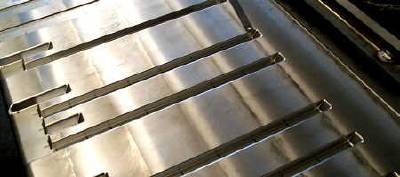
As the world economy globalises and the traditional empires of manufacturing close down it is clear that the winds of change are blowing strongly. But what kind of order will replace what many people have known for so long? Dennis Bella explores the idea of distributed manufacturing.
Traditional manufacturing could one day morph into a distributed manufacturing model. Thanks to the latest advancements in additive manufacturing and online collaboration, today’s startups are embracing the concept for localized, customized, and decentralized manufacturing.
Distributed manufacturing decentralizes traditional manufacturing and takes supply chain strategies to a new level like never before. Backed by the internet, were no longer bound by the geography of a single factory, designer, or distributor. A smaller volume of parts can be made on a cheaper scale when compared to traditional high-volume manufacturing. Apart from the benefits of working with localized specialty manufacturers, the real prize is extensive customization for products that was not economically feasible in the past for high-volume manufacturing. Whereas traditional manufacturing is usually bound to a linear approach in its design, tooling, and methods, a distributed model allows for specialized manufacturers, 21st century craftsman, and sellers with particular talents to focus on what they do best while sustaining profitability in globally competitive markets.
In this brave new world, supply chains are redefined thanks to a combination of specialized additive manufacturing technologies, open source movements, and online collaboration. From small independent makers to enterprises, key advantages are taking shape:
- Less capital investment risk
- Increased use of open source and/or free collaboration tools
- Environmental sustainability
- Diverse choices in design and manufacturing talent
- Lower costs of production and increased productivity
- Enhanced logistics and time-savings
- Less need to anticipate production volume
- No middlemen or markups
- Economic development improvements for geographically difficult areas
- Strengthening local economies
Using distributed manufacturing also means having a better handle on anticipating your stock, raw materials, and inventory. Coupled with intelligent supply chain management, you have greater flexibility in producing products according to demand.
In only a few years since the acceleration of 3D printing, designers across the globe have provided advancements for low income or economically devastated areas. For example, prosthetic limbs, once expensive to produce and transport to remote or war-torn areas, are now produced on the fly locally at dramatically less cost when compared to sourcing from a direct manufacturer thousands of miles away. This is also true for 3D-Ponics, a non-profit organization dedicated to distributed manufacturing for building efficient and affordable hydroponic gardens.
See full story on grabcad.com
Image courtesy of grabcad.com
Distributed manufacturing, small-scale and highly specialised, niche-product and custom designed manufacturing are concepts that are now viable and likely to surge in the near future (12-24 months). These new modes of manufacturing will bring the power to create and engage commercially to new groups of people with new ideas and new ways of thinking.
Forbes.com recently published an article by Louis Columbus on the top ten emergent technologies for 2015 – No 7 is distributed manufacturing.







